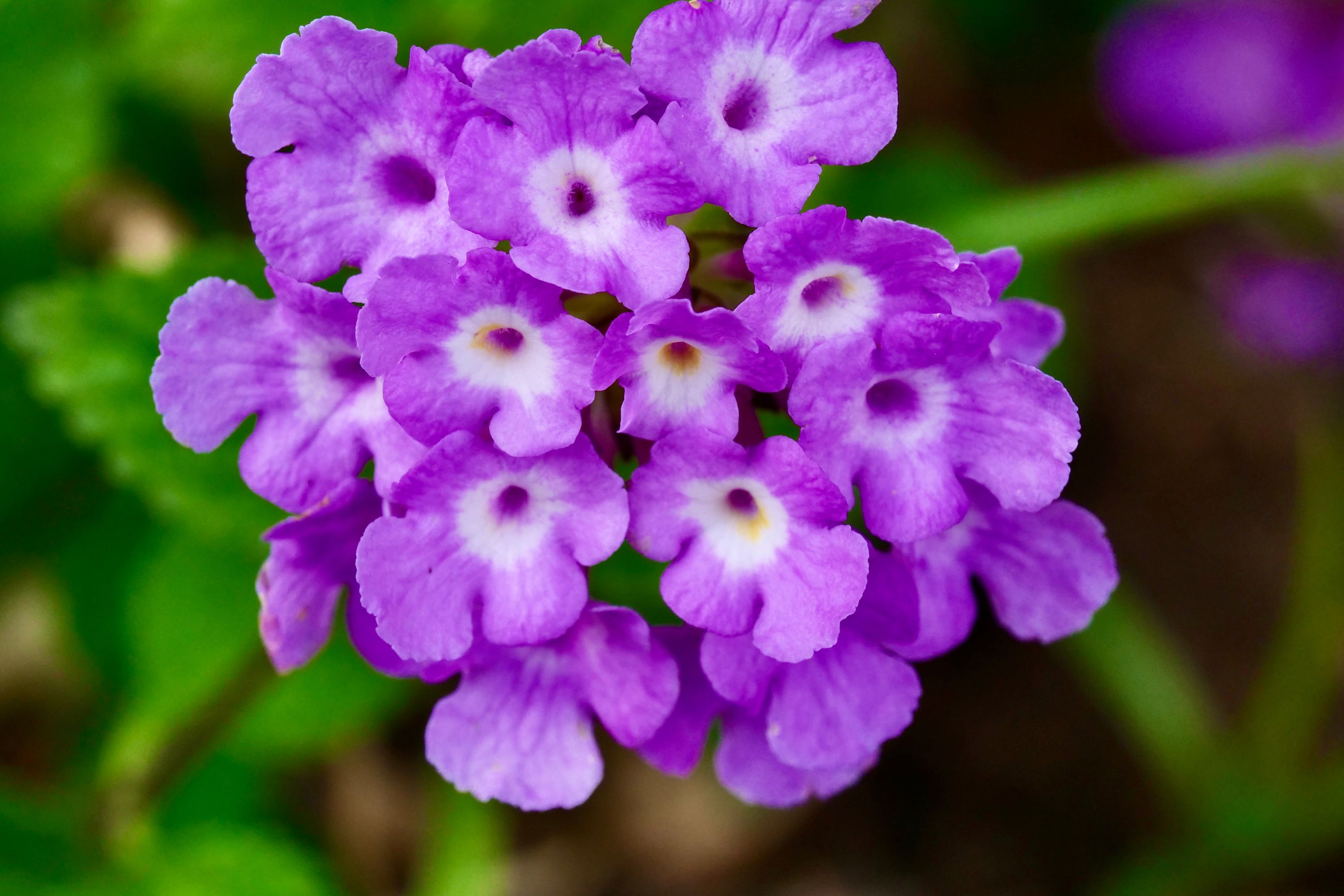Creeping lantana
(Lantana montevidensis)

Description
Lantana montevidensis is a popular and commonly cultivated species of flowering plant in the genus Lantana. It is also known by several other names, including creeping lantana, trailing lantana, and weeping lantana. This plant is native to South America and is particularly prevalent in Uruguay and southern Brazil. It is a hardy perennial plant that is often grown as a groundcover or as an ornamental plant in gardens and landscapes. In this article, we will explore the characteristics and properties of Lantana montevidensis in detail. Taxonomy and Classification Lantana montevidensis belongs to the family Verbenaceae, which contains around 35 genera and over 1,000 species of flowering plants. The genus Lantana is particularly diverse, with over 150 species, many of which are grown as ornamental plants. Lantana montevidensis is classified as a herbaceous perennial plant, which means that it has a non-woody stem and can survive for multiple growing seasons. Description and Characteristics Lantana montevidensis is a low-growing, trailing plant that typically reaches a height of 6-12 inches (15-30 cm) and can spread up to 6 feet (1.8 m) wide. It has a sprawling, cascading habit and forms a dense mat of foliage that can effectively suppress weed growth. The leaves of Lantana montevidensis are dark green, ovate to lanceolate in shape, and have a rough texture. They are also aromatic when crushed, emitting a spicy, camphor-like scent. The flowers of Lantana montevidensis are perhaps its most distinctive feature. They are small and tubular in shape, and arranged in clusters or umbels at the tips of the stems. The flowers have four petals that are usually purple or lavender in color, although they can also be pink or white. The flowers are attractive to bees and butterflies, making Lantana montevidensis a good choice for pollinator gardens. Cultivation and Uses Lantana montevidensis is a relatively easy plant to grow and is suitable for a wide range of conditions. It prefers full sun but can tolerate some shade, particularly in hotter climates. It is also drought-tolerant once established and can survive in poor or sandy soils. However, it does prefer well-draining soils and may suffer from root rot in overly wet conditions. Lantana montevidensis is commonly used as a groundcover plant in landscaping and gardening. Its dense mat of foliage can effectively suppress weed growth, making it a good choice for areas where other plants struggle to grow. It is also effective for erosion control on slopes and hillsides. In addition, the plant's attractive flowers make it a popular choice for adding color to gardens and landscapes. The aromatic properties of Lantana montevidensis have also been used for medicinal purposes. The plant has traditionally been used in South America as a remedy for various ailments, including fever, headaches, and respiratory issues. However, it is important to note that the plant contains potentially toxic compounds, and should not be ingested without proper preparation and guidance from a qualified healthcare professional. Conclusion Lantana montevidensis is a versatile and attractive plant that is well-suited to a range of growing conditions. Its trailing habit and colorful flowers make it a popular choice for groundcover and ornamental purposes, while its medicinal properties have also been recognized in traditional medicine. As a low-maintenance and hardy plant, it is a great choice for gardeners and landscapers looking to add color and texture to their landscapes.
Taxonomic tree:







